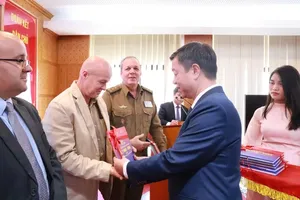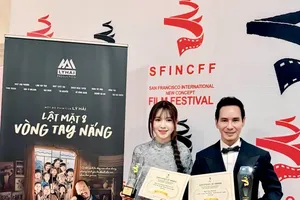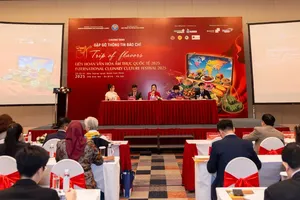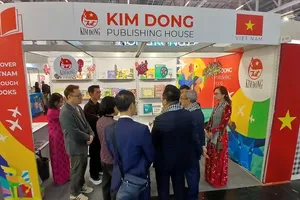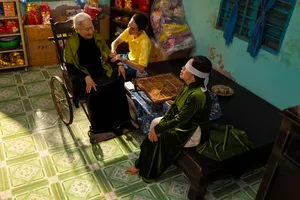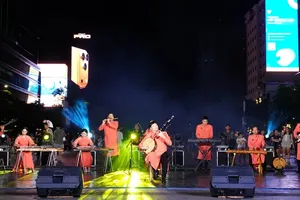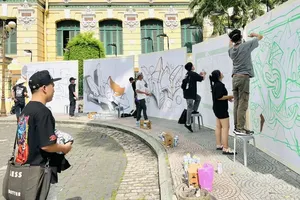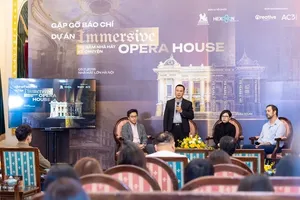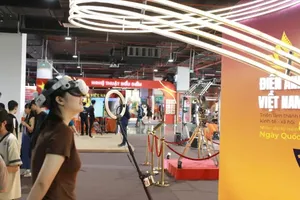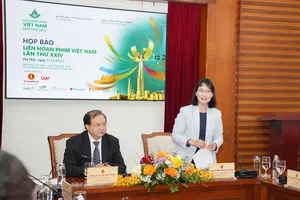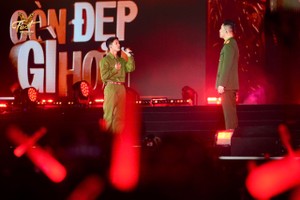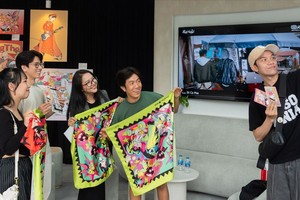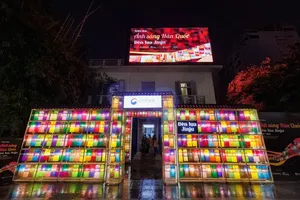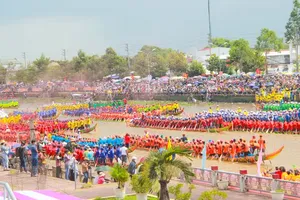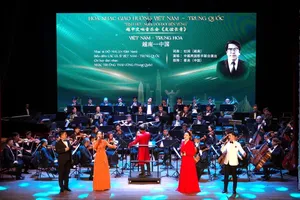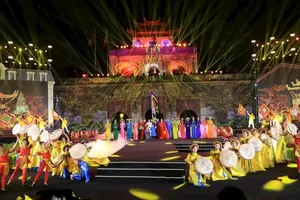
Nguyen Thanh Binh’s play “Dau xua” (Ancient Traces) offers an unpretentious narrative centered on President Ho Chi Minh’s interactions with farmers during the period following the historic Dien Bien Phu victory in 1954. Produced and staged by the 5B San Khau Nho Drama Theater, the play has garnered widespread acclaim for its compelling storyline, which artfully interweaves past events with present-day reflections. Meritorious Artist Thanh Dien’s embodiment of Uncle Ho, in particular, has drawn considerable praise from audiences.
Meritorious Artist Thanh Dien confided, “Accepting the role brought immense pressure, primarily the challenge of embodying a figure as monumental as Uncle Ho. Also, I was acutely aware that many distinguished artists before me had rendered highly successful portrayals. Consequently, I dedicated substantial time to studying and internalizing the techniques of preceding generations of artists – focusing on conveying his intrinsic character, his spirit, the warm timbre of his affectionate voice, his distinctive gait, physical bearing, and even his characteristic hand gestures.”
This dedicated effort paid dividends; following the premiere, the artist was widely lauded for a remarkably authentic portrayal of Uncle Ho – from his posture and walk to his vocal inflections and hand movements – powerfully evoking deep affection and reverence for him among viewers.
“Cuoc hanh trinh tim buc chan dung” (Journey to Find the Portrait), a production by the HCMC Drama Theater, approaches Uncle Ho’s image from a distinct conceptual angle. The narrative transports the audience to an ancient mangrove forest in Southern Vietnam, a sanctuary for displaced civilians and local guerrilla forces.
Upon learning of Uncle Ho’s passing, the forest community, driven by profound respect, secretly erects a simple shrine in his memory using mangrove wood and coconut fronds. Lacking an actual portrait, they resort to symbolic representations. This poignant scene inspires a group of children – the offspring of the soldiers and civilians sheltered there – to embark on a quest to find a true portrait of Uncle Ho, intending to carve it into a statue for worship.
While no actor physically portrays Uncle Ho throughout this play, innovative use of 3D technology, LED projections, and gauze screens conjures his luminous image. He appears as a radiant beacon, guiding the devoted young hearts who share the nation’s overarching aspiration for independence and peace.
Vietnamese cinema boasts a rich repertoire of films portraying Uncle Ho. Notably, director Ho Ngoc Xum’s “Vang trang tho au” (Childhood Crescent Moon) occupies a unique niche as the first feature film to explore Uncle Ho’s formative years.
Set between 1895 and 1901, the narrative follows young Nguyen Sinh Cung (Uncle Ho’s birth name) as he, his parents Mr. Nguyen Sinh Sac and Mrs. Hoang Thi Loan, and his elder brother Nguyen Sinh Khiem, relocate to Hue for the first time. While adopting a conventional narrative approach without major artistic innovations, the film resonates through its heartfelt intimacy, unfeigned naturalness, and emotional depth.
A particularly poignant scene depicts Nguyen Sinh Cung, not yet ten, clad in white mourning attire, his small hand on his mother’s coffin, amid the inconsolable grief of his younger sibling - a moment that deeply touches viewers’ hearts.
Director Ho Ngoc Xum expressed particular satisfaction with the project’s portrayal of Uncle Ho’s early life – depicting him as an ordinary, vivacious child, not without the mischievous escapades typical of youngsters. Yet, it was precisely these commonplace experiences, filtered through his keen observation, intellect, filial devotion, and burgeoning compassion, that sowed the seeds for the character and integrity of the leader he would become.
Crafting the film involved painstaking preparation. Its award-winning screenplay presented meticulously researched details, grounded in Uncle Ho’s life anecdotes despite some fiction. Selected actors needed impeccable backgrounds while the young leads to play Nguyen Sinh Khiem and Nguyen Sinh Cung were chosen from over 200 hopefuls, reflecting rigorous casting for authenticity.
“Vang trang tho au” stands as a significant contribution to the cinematic corpus dedicated to President Ho Chi Minh’s life and revolutionary endeavors. The film offers insights into the genesis of his virtues, tracing their roots to the influence of his benevolent mother – profoundly devoted to her husband and children – and his father, an upright and patriotic Confucian scholar.
Honoring works inspired by Uncle Ho’s legacy: Creative and promotional awards ceremony
In the evening of May 19 in Hanoi, the Central Propaganda and Mass Mobilization Commission hosted an awards ceremony recognizing excellence in the creation and promotion of literary, artistic, and journalistic works centered on the theme “Studying and Emulating Ho Chi Minh’s Ideology, Ethics, and Style”, for the second phase of the 2021-2025 period.
In his address at the ceremony, Head Nguyen Trong Nghia of the Central Propaganda and Mass Mobilization Commission highlighted that the continually expanding volume of submissions from an increasingly diverse pool of participants serves as compelling testimony to the award’s broadening reach, escalating appeal, and augmented prestige.
He acknowledged and commended the contributions of agencies, units, artists, intellectuals, journalists, officials, Party members, and citizens from all societal strata, both in Vietnam and abroad, alongside international authors. Through their literary activities and artistic portrayals, they have disseminated and celebrated the enduring heritage values of President Ho Chi Minh, thereby inspiring and fostering a society-wide commitment to studying and emulating his example.
The organization board conferred 12 A prizes, 56 B prizes, 99 C prizes, and 102 consolation prizes. Additionally, special commendations were presented to 46 collectives and individuals for their exceptional achievements in promoting literary, artistic, and journalistic works on the theme of “Studying and Emulating Ho Chi Minh’s Ideology, Ethics, and Style”.
